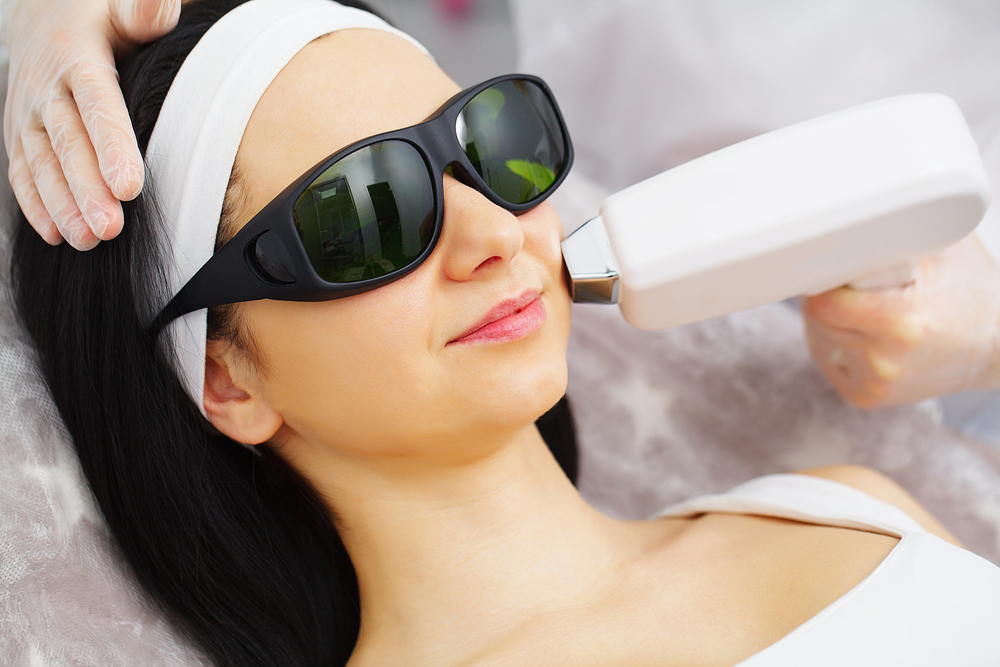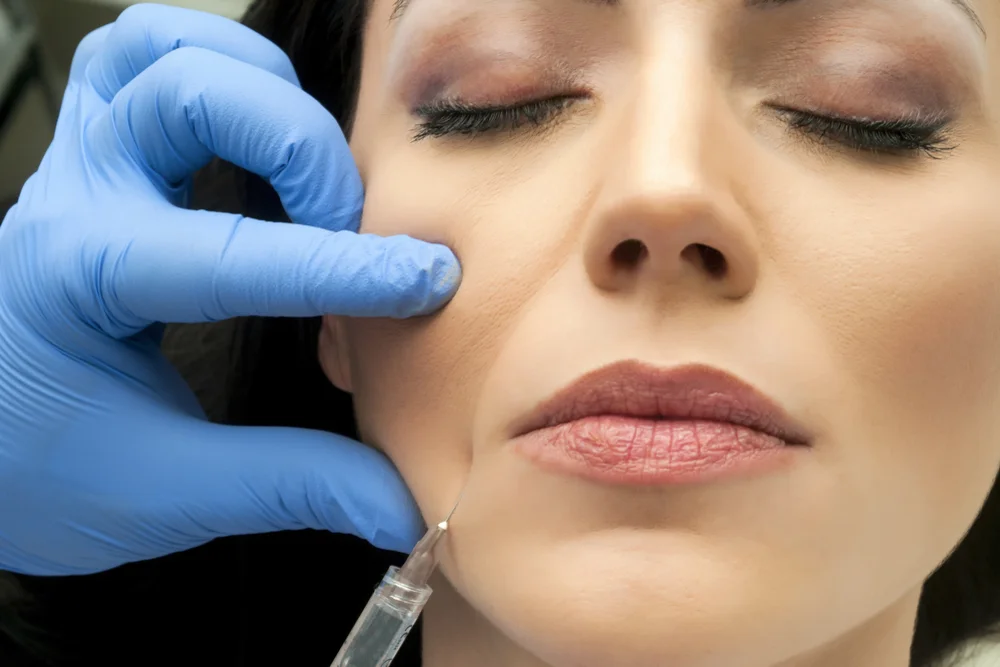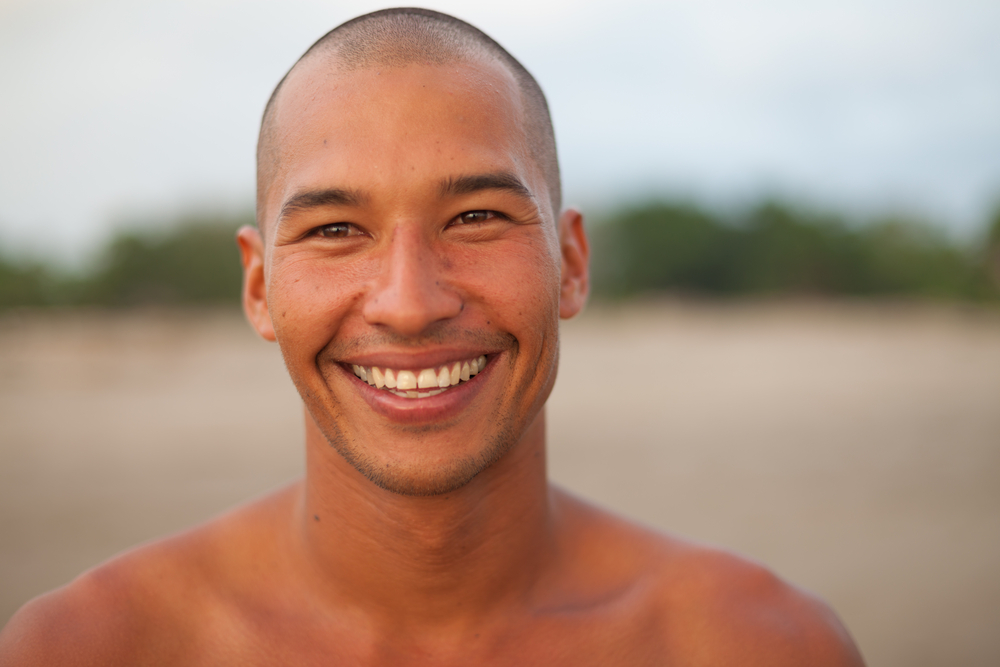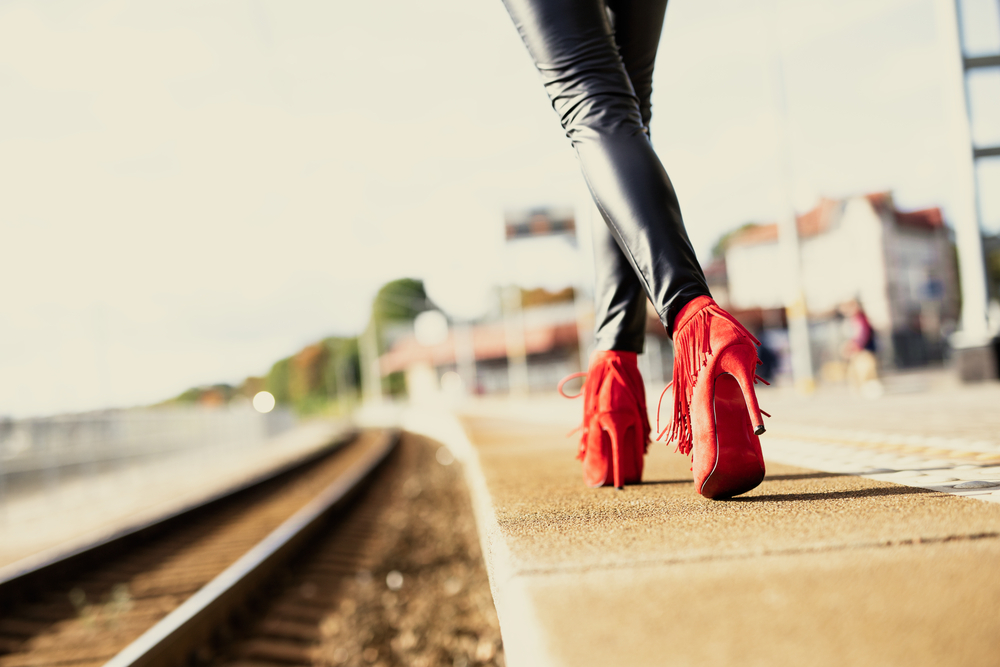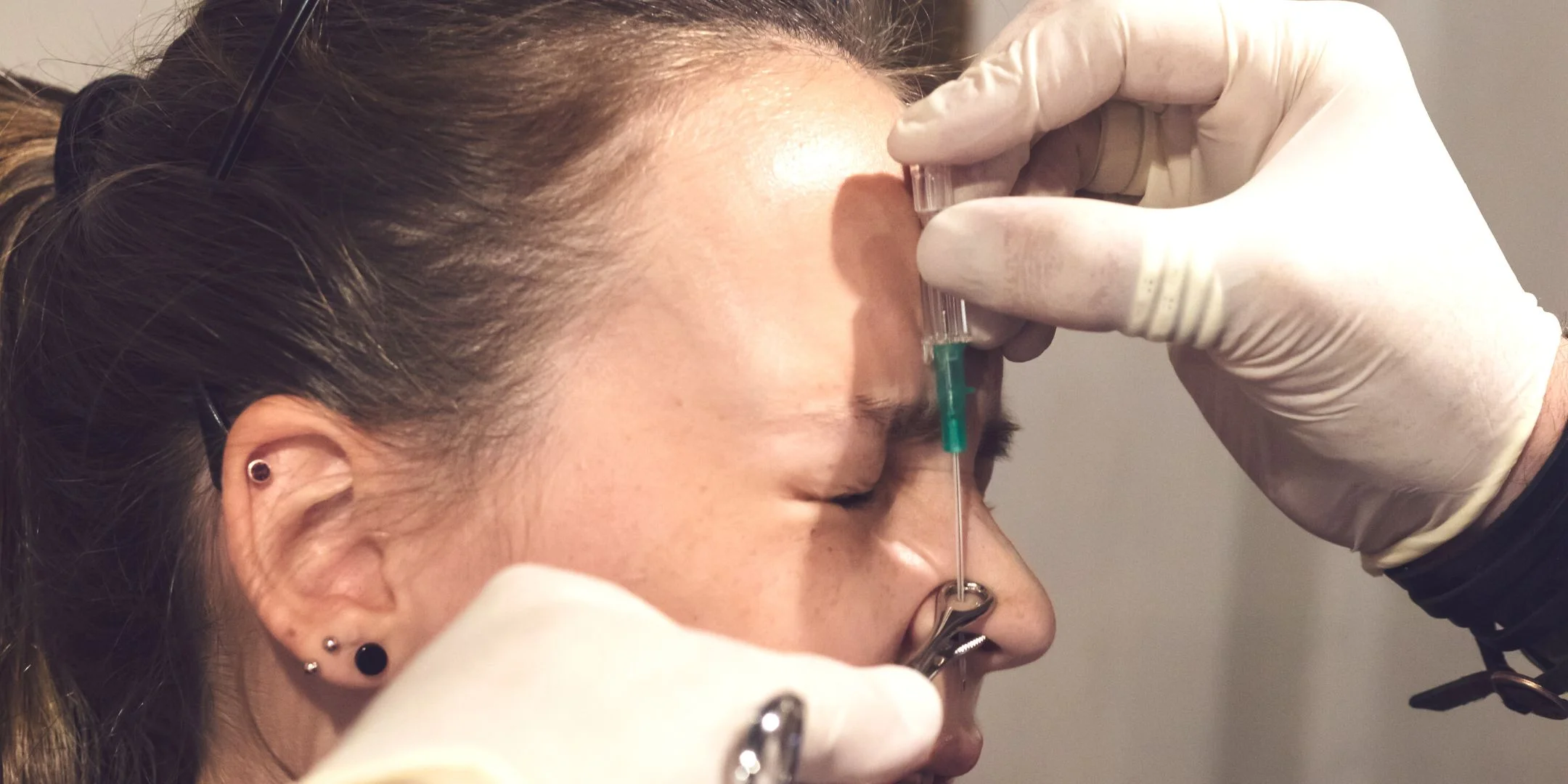There are a number of light-based facial rejuvenation technologies on the market today, each producing therapeutic light in a unique manner.
Intense Pulsed Light (IPL) photofacial treatments use small, handheld devices to create high intensity bursts of light over a wide spectrum of visible and infrared waves. Filters allow the practitioner to select a specific light range, depending on your needs.
Some patients undergo IPL to boost collagen production and help tighten the skin naturally. Others use the treatments to fight acne breakouts and acne scarring. Photofacials can also be effective on rosacea, melasma spots, and sun damaged skin.
This guide provides you with all the information you need before scheduling a consultation with your local cosmetic doctor and undergoing your first IPL session.
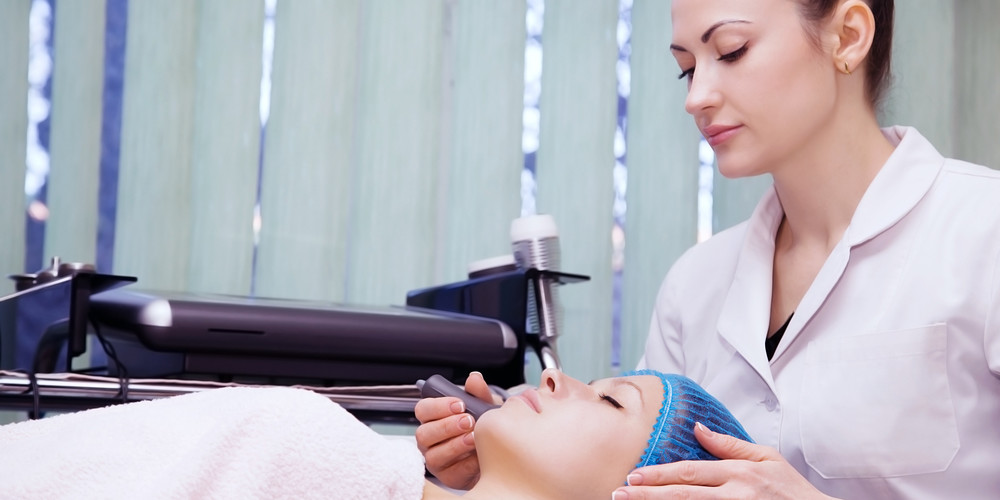
RELATED: Understanding Photofacials — IPL Laser vs. LED Treatments
What Happens During Your Treatment
To give you a sense of what you can expect on the day of your first IPL treatment, here is a step-by-step breakdown of the process.
- Upon arrival, you’ll be shown to the treatment room and asked to wear special eye-protection.
- The area to be treated will be cleansed with a mild soap. If you’re concerned about discomfort, a topical anesthetic (numbing cream) can be used, although this isn’t usually necessary.
- A cool gel is then applied, and the device is gently pressed against your skin. The part that actually makes contact with your skin has a glass surface, and houses the light source.
- As the light begins to pulse against your skin, you might feel a very slight stinging sensation, like someone snapping a small rubber band against your face. Mild swelling and redness is not uncommon, but usually fades quite quickly.
- Each pulse of light lasts just a couple of milliseconds, but many are delivered to cover the entire treatment area. The first treatment tends to sting the most. However, as your skin heals and becomes healthier, the treatments usually become more comfortable. Each treatment lasts around 15 to 45 minutes.
- Once the treatment is complete, the gel is wiped off, your face is gently washed with a warm cloth, and a moisturizer and sunscreen are usually applied. Application of sunscreen with a high SPF is absolutely crucial, since your skin will be quite sensitive to the sun. You might also be given a cold pack to apply to any swelling for about 5 to 10 minutes.
- You may be allowed to wear makeup to camouflage any lingering redness, but will need to wait a few hours before doing so.
Results will become most apparent after 3 to 5 months, with multiple sessions performed 3 weeks to a month apart. You will notice improvements after each and every treatment. However, it’s not uncommon for your skin’s reaction to be a little different from one treatment to the other.
Levulan PDT
A more powerful version of IPL treatment is known as Levulan photodynamic therapy, or Levulan PDT. This involves applying the medicated solution, Levulan (5-aminolevulinic acid or ALA), to the target area before treatment. Levulan makes the skin more photosensitive to specific light wavelengths, which improves the effectiveness of the treatment.
What Concerns Does it Help With?
Get ready to say good bye to sun damage, rosacea, hyperpigmentation, and more! Utilizing different wavelengths of light for different conditions, IPL photofacial treatments help give red, blotchy skin a beautiful, clear complexion.
One of the advantages of IPL is that it can used to treat a number of skin concerns all at once. Some of the most skin conditions it effectively addresses include the following:
- Very fine lines and wrinkles, like crow’s feet, crepey skin, and other fine lines on the face.
- Age spots on either the face or body, including the hands and chest.
- Birthmarks, including port wine stains.
- Poikiloderma, which is a reddish skin tone that usually occurs on the chest and/or neck.
- Burn erythema, which is when blood vessels stay wide open after a mild burn to the skin, causing a reddish skin tone similar to a sunburn.
- Spider veins and broken capillaries.
- Rosacea — while IPL isn’t a cure for rosacea, it can help reduce its appearance, especially in the cheeks, forehead, and chin
Although IPL is mostly used to treat skin conditions that occur on the upper body and are a result of sun damage, that doesn’t mean it’s only good for the face, chest, and hands. In fact, this procedure is so gentle, it can be used effectively on pretty much any part of your body to erase sun damage and the signs of aging.
How Does IPL Compare to Other Skin Rejuvenation Treatments?
If you are looking for ways to give your skin a younger, more refreshed appearance, there are many minimally invasive options to choose from.
Before deciding on any particular procedure, including IPL photofacials, it’s important that you understand how each one works, and what skin conditions they treat.
IPL vs. Chemical Peel
While both of these treatments are meant to help rejuvenate the skin, they go about it in very different ways.
An IPL photofacial relies on intense pulses of light to break up pigment and promote collagen growth, whereas chemical peels use acids of varying strengths to exfoliate the outer layers of skin. These acids break down the bonds between old, dead skin cells, revealing the healthy, smooth, and youthful looking skin underneath.
One of the advantages of chemical peel treatments is that they can be administered in different strengths, producing different results depending on your goals. Generally speaking, severe discoloration or wrinkles need a moderate to deep peel to show any real improvement, which carry more risks than superficial, light peels.
Because photofacials use only light, they are non-invasive by definition. You can return to your normal activities immediately after your treatment. On the other hand, chemical peels can be more intense for your skin, and may require a bit more downtime.
Light and medium strength chemical peels can cause mild discomfort in the form of slight stinging or burning. The deeper the chemicals penetrate into the skin, the longer your recovery will take. In fact, deeps peels usually require general anesthesia, and can result in a fairly long recovery period of up to several weeks. Furthermore, deeper peels carry a much higher risk of infection and scarring than lighter peels or photofacials.
The cost of each treatment might also be a deciding factor for many people.
IPL photofacials can cost between $300 and $600 per session. The price of a chemical peel is usually dependent on the strength: superficial peels generally cost about $150 to $300, but need to be repeated 3 to 5 times for the best results. Medium depth peels are usually performed twice, and cost from $1,000 to $2,000 per peel. Lastly, deep peels are generally only performed once, and can cost as much as $5,000 or more.
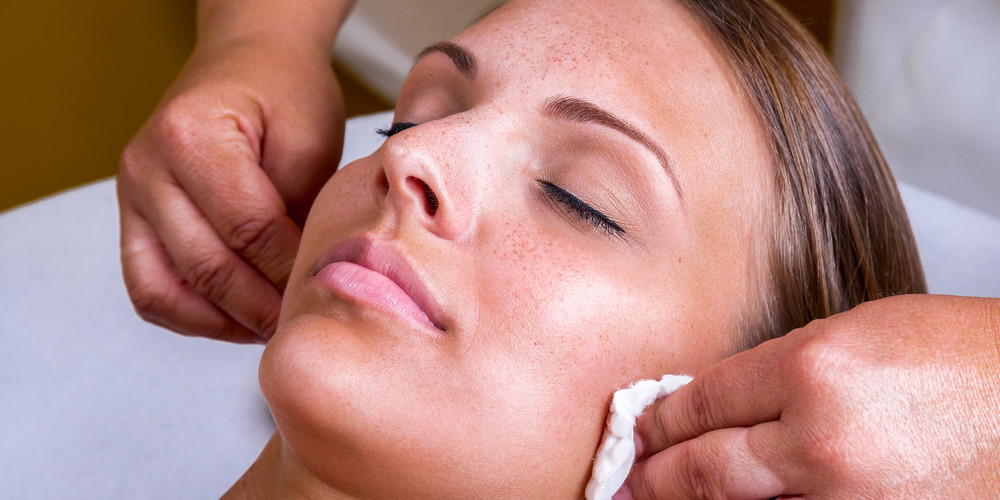
RELATED: Zwivel’s Complete Guide To Chemical Peels
IPL vs. Microdermabrasion
Another skin rejuvenation technique that can be compared with IPL photofacial is microdermabrasion. Both treatments are used for the same skin concerns, including sun damage, skin discolorations, rosacea, and acne.
Microdermabrasion is a mild resurfacing method that relies on a physical exfoliation of the outer layer of skin to reach desired results. During the procedure, your practitioner will use a specialized wand to remove the top layer of skin and reveal fresh new cells below.
There are a few different types of wands to choose from, some literally firing an abrasive material against your skin, while others use a diamond tip. Regardless of the specific technique, the idea is to break up the stratum corneum, or top layer of the skin. By breaking up and removing the stratum corneum, microdermabrasion helps speed up the rate at which your skin cells die and are replaced by new, healthy cells. Much like IPL photofacials, this treatment can also encourage the growth of new collagen in the skin, improving the appearance of scars and wrinkles.
The biggest difference between the two techniques is how they work on the skin. Microdermabrasion offers a “from the outside in” approach to skin rejuvenation, peeling off and removing the top layer of skin. Photofacials, however, work “from the inside”, and can target damaged cells deep within the lower layers of skin, without causing significant harm to the surface. In general, IPL photofacials results are easier to see, and last much longer.
As far as side effects go, both treatment options can create that mild redness and swelling, which fade over a day or so. Both treatments can also make your skin especially sensitive to the sun. The most important difference between either option’s side effects is that IPL photofacials have a small risk of mild blistering, bruising, infection, scarring, or skin color changes. While these side effects are very rare, they are even more infrequent with microdermabrasion.
Again, the final factor to keep in mind is cost. Microdermabrasion will need to be repeated often to maintain the results — it’s usually recommended that you complete a series of 6 to 13 weekly or bi-weekly treatments. Professional microdermabrasion can be quite expensive, costing as much as $200 per session. Home kits are much more affordable, but are also much less effective, meaning you’ll need to perform the treatment even more often to get the same results as a professional treatment.
IPL vs. Microneedling
Another skin rejuvenation treatment option is microneedling. Rather than remove the outer layer of skin or use light to penetrate deep beneath the skin’s surface, microneedling literally punctures the skin with tiny needles. Sometimes this is done using a small, rolling pin like device. Others microneedling treatments are done with a stamp or an electronic wand.
These small puncture wounds cause your body to react by producing new collagen, which in turn helps to plump up and smooth out the skin, effectively treating fine lines and wrinkles. Depending on the length of the needles, microneedling can also break up pigmentation in the skin, allowing it to be absorbed by the body, which makes it a fairly effective treatment for dark spots as well.
While both of these procedures are considered skin rejuvenation treatments, they are most effective for the treatment of different skin conditions. Although IPL photofacials does encourage the production of new collagen within the skin, it’s much more effective at dealing with skin discoloration issues and removing background pigments.
In the end, IPL photofacials are much more effective at treating coloration problems than microneedling, and microneedling is much better at helping your body create more collagen to smooth out wrinkles and fine lines.
In most cases, patients need at least 3 to 5 professional microneedling treatments, which can cost between $300 and $500 per session. There are also at-home kits available for a lesser cost, but the results aren’t always as striking. The simplest device cost about $20, while the most advanced at-home machines utilize radio-frequency waves in addition to the needles, and can run as high as $500 to $600.
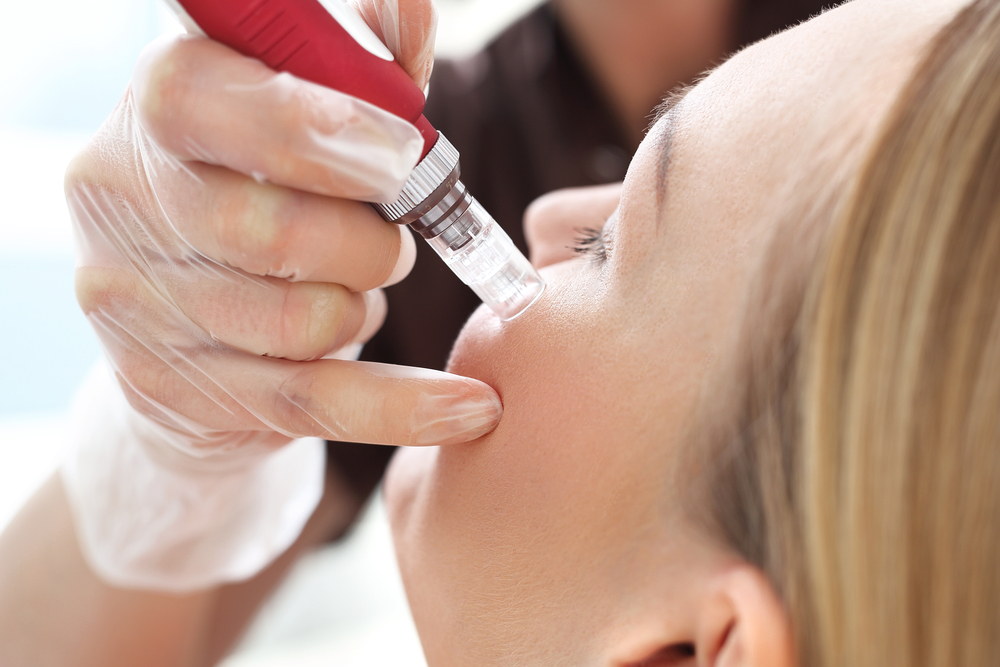
RELATED: Microneedling And The Vampire Facial — Separating Fact From Fiction
IPL vs. Botox & Fillers
Although also a safe and effective way to treat facial wrinkles and scars, Botox and injectable fillers couldn’t be more different from IPL photofacials. While the light-based procedure can create a slight improvement to wrinkles and creases, Botox and other fillers are specifically designed for that purpose. In fact, many practitioners consider photofacials to be ineffective in the treatment of wrinkles.
Botox, which is a purified protein that temporarily paralyzes muscle contractions, is perfect for the short-term treatment of frown lines, crow’s feet, forehead wrinkles, and skin bands on the neck. Dermal fillers are also an effective, yet temporary solution that restores facial volume, helping to correct age-related volume loss and soften deep facial creases or wrinkles. However, unlike photofacials, these medical products do not treat pigmentation irregularities.
The biggest drawback to treatments such as Botox and injectable dermal fillers is that, by definition, they are temporary. Results from these treatments will only last a few weeks or months before the treatment needs to be repeated. The only injectable technique that provides long lasting results is autologous fat transfer, during which the doctor removes fat cells from one part of your body, and grafts them into another. This sort of “filler” can last for many years, with many doctors and patients considering it pretty much permanent.
While most Botox treatments and injectable dermal fillers require multiple procedures, just like IPL photofacial, in most cases those treatments must go on indefinitely. This will most certainly drive the price up, and it can become a regular payment you’ll need to work into your budget. IPL photofacials often need to be repeated a few times, but most patients won’t require more than 5 or so treatment to reach their goals. With Botox costing between $300 and $1,000 per session, and injectable fillers falling somewhere between $450 and $1,500 per treatment, the continuing costs can add up.
Most facial fat transfer procedures are in the $450 to $750 range, and have the advantage of often only requiring a single treatment, with the possibility of smaller touch ups later on.
IPL vs. Laser Resurfacing
Of all the skin rejuvenation procedures, laser resurfacing is probably the most closely related treatment to IPL photofacials. Both treatments are available to a wide range of potential patients who want to lessen the appearance of skin conditions like scars, birthmarks, stretch marks, and wrinkles. Both treatments are also effective at improving skin tone, smoothness, and firmness. Both options use a form of light to treat the layers of skin. Yet, despite all these similarities, they are not the same.
For starters, the procedures themselves are a bit different. Laser resurfacing uses a much more focused beam of light to promote growth of healthy skin cells and collagen, while IPL photofacial light is more diffused. This means that the laser is a little better at improving the skin’s texture and tightness. It also means that there is a higher risk of burning the skin.
Recovery time can also vary between these two treatments. While the treatments themselves take about the same amount of time, with IPL treatments lasting about 15 to 45 minutes, and laser treatments taking about 30 minutes, laser recovery time is dependent on a number of factors. These can include the specific type of laser used for the procedure, the size of the area treated, and the severity of the issue. In general, recovery after a laser resurfacing treatment can be upwards of two weeks, whereas IPL recovery time is of a few days at the very most.
Another IPL photofacial advantage is that the light used for the treatment can be filtered into different wavelengths to target different skin concerns. This is simply not possible with a laser. This means that IPL photofacials are able to treat a bigger range of skin problems, and can also be used on patients with a slightly wider range of skin tones.
Despite the differences in approach, both laser resurfacing and IPL treatment have very similar side effects, including redness, swelling, skin pigmentation changes, and a small chance of infection and scarring. Laser resurfacing also carries the added, albeit very small, risk of burning the skin.
The cost of these two treatments is also rather similar. Laser resurfacing usually falls in the $900 to $1,200 per treatment range. This is more expensive than IPL treatments, but IPL patients usually need up to five sessions. Exactly how many laser treatments you’ll need will depend on your goals, but they can often be reached in as few as three.
There are a great many different options for skin rejuvenating procedures, and in many cases they can be combined. Which is the best choice for you and your unique skin problems is best decided upon after an in-depth and detailed discussion with your doctor regarding your medical history, goals, and concerns.
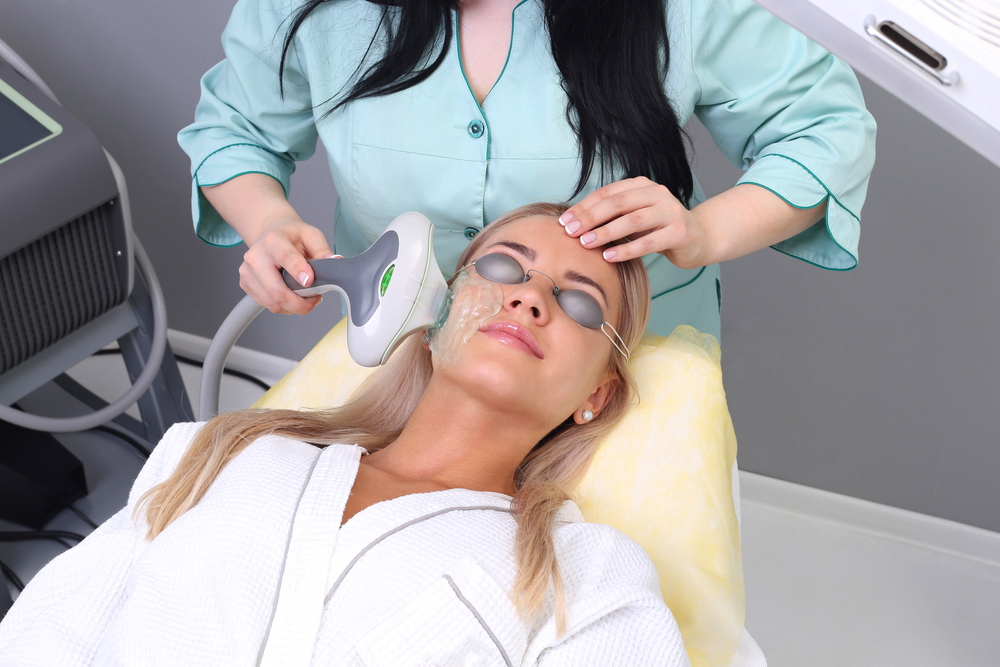
RELATED: Laser Vs. IPL Skin Treatments — Misconceptions, Risks & Results
Ideal Candidates
As a non-invasive procedure, IPL photofacials are available to a wide range of people. Not only is the procedure itself gentle, it’s quick and requires no downtime, making it perfect for people with busy schedules. This procedure is a great option for anyone with blotchy, sun damaged, or discolored skin. Likewise, it’s also a good option for treating enlarged pores or wrinkles. The ideal candidate for IPL photofacial treatments has light toned, untanned skin that still has some elasticity to it.
IPL is an excellent option for men and women of all ages who are considering treatment for a wide range of skin conditions, including the following:
- Brown or age/sun spots
- Fine lines and wrinkles
- Hyperpigmentation, or a darkening of the skin
- Pregnancy mask
- Acne (while breakouts may be worse shortly after a treatment, but they will get better with time)
- Mild acne scars
- Rosacea
- Broken capillaries
- Facial spider veins
- Leg veins
- Enlarged pores
- Enlarged oil glands
- Unwanted hair
- Abnormal skin coloration
- Dull skin
- Port wine stains
- Angioma
In addition to physical concerns, in order to be a good candidate for IPL photofacial treatments, you need to have a realistic understanding of the procedure’s limitations, as well as realistic expectations for the results. For more series issues such as deep facial lines, you might want to consider a more aggressive treatment, like a face or brow lift.
Non-Ideal Candidates
Unfortunately, IPL photofacial treatments aren’t for everyone. In particular, people with tanned or naturally dark skin can sometimes experience permanent skin coloration changes after an IPL treatment, in the form of hyper- or hypo-pigmentation. The light can’t tell the difference between natural, wanted skin pigmentation, and ugly, unwanted discolorations, and thus destroys them both equally.
This is why people with darker skin tones, or even those with an olive skin tone, should definitely discuss possible side effects with their practitioner before beginning treatment. If you’ve recently gotten a tan, you may need to wait until your tan fades before proceeding with treatment.
Another factor that might make you a poor candidate for this procedure is the medication Accutane. Most often used to treat severe acne, Accutane has some side effects than can affect the condition of your skin, including making it especially sensitive to light. For this reason, you shouldn’t undergo any IPL photofacial treatments for at least 6 months after you stop taking the drug.
There are also a number of medical considerations that might make you a poor candidate for IPL photofacials. These can include the following:
- Lupus
- A history of keloid scars forming (thick, raised scars)
- A tendency for your skin to darken as it heals
- Porphyria, which is a blood disorder that makes people sensitive to light
- Any condition that results in extreme sensitivity or allergy to light.
Pregnant women should also wait to have the treatment done until after they have given birth.
10 Tips To Prepare for Your IPL Photofacial
- The single, most important thing to do as you prepare for your IPL photofacial is to stay out of the sun as much as possible for 4 to 6 weeks before your treatment. Tanned skin is unsuitable for treatment, since it significantly increases your risk of discoloration. For that reason, you’ll need to take special care to wear a broad spectrum, high SPF sunscreen when you go out, and to stay away from tanning beds. Keep in mind that if you do have a tan and show up to your appointment, your practitioner may refuse to perform the treatment and insist on rescheduling it. This is for your safety!
- To make sure that your skin is in the best shape it can be in for your treatment, moisturize regularly in the weeks and days leading up to the procedure.
- If you’re a smoker, it’s recommended you stop at least 6 weeks before any medical procedure, but this is especially important for skincare. Smoking interferes with the way your blood carries oxygen and nutrients to the skin, prolonging recovery and potentially leading to poor results.
- A few weeks before your treatment you’ll need to stop taking any aspirin, certain anti-inflammatory drugs, and any herbal supplements that can cause bleeding. The IPL photofacial procedure destroys small capillaries, and if you have any of these blood thinning substances in your system, they can lead to unnecessary bleeding and discoloration. It may also increase swelling.
- Stop taking any antibiotics or topical creams that can cause your skin to become sensitive to light. Be especially careful to avoid retinoids, like Retin-A, which are derived from vitamin A.
- Stay hydrated. This is important before any procedure, but with skincare treatments like the IPL photofacial, being properly hydrated gives your skin its best chance at healing quickly and efficiently.
- If you are living with the herpes virus, you might be asked to take anti-viral medication to lessen the chances of an outbreak on the day of your treatment. If a cold sore does appear prior to your appointment, be sure to let your doctor know as soon as possible.
- Load your diet up with plenty of fruits, vegetables, whole grains, and lean proteins. Studies have shown that a diet rich in unprocessed foods and vitamins, and low in dairy, white carbs, and sugar can actually be extremely beneficial to your skin, and can even help you age more gracefully. Keeping unhealthy fats and refined carbs out, and adding more vitamin C might also promote younger looking skin.
- Try to stay nice and calm. If you’re too stressed out, your skin can actually become more sensitive, start an acne outbreak, or any number of other skin conditions. Try to managing your stress through reasonable to-do lists, setting appropriate limits for yourself, and setting aside time for the things that you enjoy. Consider meditation; it’s an amazing tool against stress.
- On the day of your procedure don’t bother putting on any makeup or skincare products. Your face will need to be completely clean before the treatment can begin. Your practitioner will also cleanse the area before your treatment begins.
What to Expect From Recovery
One of the most appealing advantages to the IPL photofacial procedure is that there is virtually no downtime at all. Your skin might look and feel as though it were a little sunburned for a day or so, but there’s nothing preventing you from going right back to most of your normal activities.
Most patients don’t really see any side effects at all within the first day or two after the procedure, but don’t be alarmed if you start to see some puffiness around the eyes, or “chipmunk-like” swelling in the cheeks. This is to be expected. A couple of easy ways to help minimize any potential swelling are to simply sleep with your head elevated for the first night, and use an ice pack or cold compress for 15 minutes on and off for a few hours after you leave the clinic.
Other rare but known side effects you might see include mild blistering or bruising that can last for a few hours, and up to 2 weeks. For some patients, depending on what skin issues led them to an IPL photofacial treatment, the treated areas might also start to form a crust or light scabbing. After a couple days, you may also notice small pigmented spots appear. This is known informally as “coffee grounds”, and is basically pigment rising to the surface of your skin. This response is normal and expected, and will depend on both the sensitivity of your skin, and the severity of the problem that is being treated.
If you start to notice flakes or coffee grounds forming, it’s best to just leave them be. Avoid picking at them. In fact, you can probably expect to see any targeted areas of darkened skin start to crust, turn black, and peel off in this fashion. Again, this is normal and should go away within 7 to 10 days. Picking at this crust can cause more problems, and result in further skin discolorations, and in the most severe cases, scarring.
You can also expect you skin to be more sensitive than usual following an IPL photofacial. This means you’ll need to take special care to protect yourself whenever you need to go out. Wide brimmed hats and loose-fitting clothing that comfortably shield the treated areas from harmful sun damage are a must. And be sure to apply and reapply a sunscreen with an SPF of 30 or better for at least the first 2 or 3 days after your treatment.
Many patient’s skin sensitivity returns to normal only after a few short days, but other patients can continue to be extra sensitive for a few weeks. Keep that in mind when planning any outings in the days and weeks after your treatment.
Timeline of Results & What to Expect
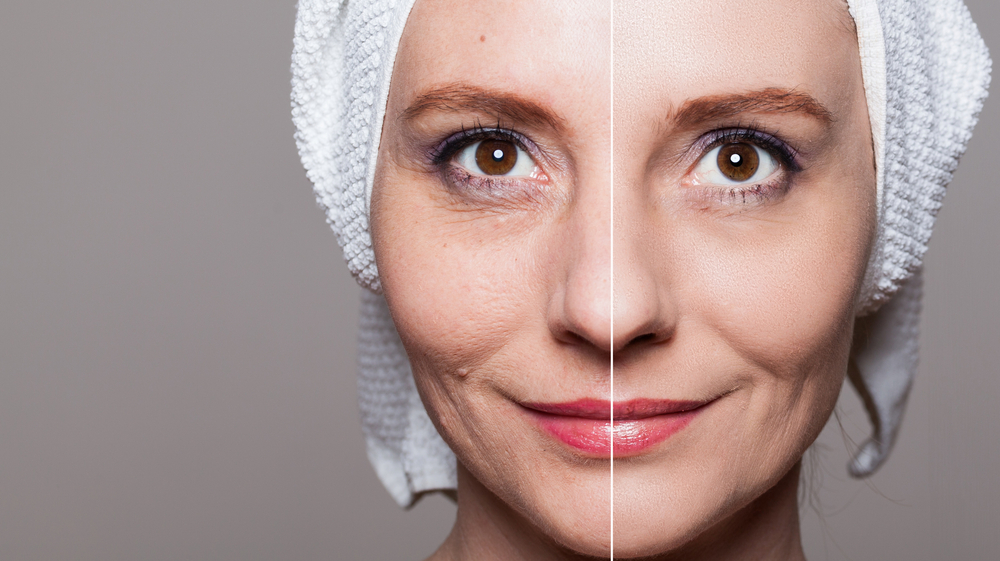
Once a full course of treatments are complete, the results from IPL photofacials can be extremely long lasting, and often follow a fairly reliable and predicable timetable.
- Immediately After Treatment
Right after you first treatment, you may notice some redness and swelling in and around the targeted treatment areas. Some bumps may also appear at this time (or in the day after) known as perifollicular edema. This is normal and to be expected. Redness and swelling often fade within a few short hours, but they can persist for a day or two. - Day 2
Many people who rush to the mirror on the morning of the day after their first treatment will be greeted with lots of tiny dark spots all over the area that was treated. This is exactly what you want to see. This means that the issues you wanted to correct were hit by the pulses of light. You can expect these spots to darken, start to flake or peel, and fade away within a matter of days. - Day 4 – 7
By this point, the darkening and flaking portion of your recovery should be just about done, revealing new, fresh, and more evenly toned skin. It’s not uncommon for others to start taking notice of the improvements around this time too! The difference, even after a single treatment, can be pretty amazing.
Exactly how many photofacial treatments are needed will depend on you and your needs. Generally speaking, most patients can expect to undergo between 3 and 5 treatments, spaced out over several weeks, before reaching their goal. Some patients will need fewer treatments, but in the years since the IPL photofacial procedure was created, it’s been shown that most people get the best results from 5 sessions. Improvements to the skin are gradual with this technique, and only become fully revealed after several treatments.
Once completing a full series of treatments, what to expect after IPL is skin that looks both refreshed and rejuvenated, with marked improvements to both the tone and texture. There will also be a large reduction in brown or red spots, less visible small red blood vessels like spider veins, and much fewer areas of uneven pigmentation. Often pore size is reduced by as much as a third, and the skin simply looks better overall. People with rosacea or abnormal flushing problems will also see these issues fade quite a lot.
After all of your sessions have been completed, you can expect your results to possibly last for several years or more. Unfortunately, with the slow march of time, and ongoing exposure to the sun and other environmental factors, your skin will continue to age even after completing the procedure.
With this in mind, some people choose to continue having “maintenance” or “touch-up” sessions to keep their skin looking its best. The first of these maintenance sessions is usually performed around 4 months after you complete your first series of 5 treatments.
10 IPL Photofacial Recovery Tips
- A mild sunburn-like reaction is normal and expected right after your treatment. To soothe the area you can apply a cold compress or cold pack directly to the treated spots for 10 to 15 minutes at a time. You can repeat this every hour for the first few hours after treatment as you need it.
- Continue to use proper sun protection. Frequently applying sunscreen is critically important, as your skin will be especially sensitive to light following treatment. Use a broad-spectrum sunscreen offering protection from both UVA and UVB rays, and an SPF of at least 30. Apply your sunscreen 20 minutes before venturing into the sun, and again immediately before you go. After that, you should be re-applying every 2 hours. If you can’t avoid going into direct sunlight make sure you wear a wide brimmed hat and clothing that shields your treated areas.
- Make sure that any skincare products you use during the first week of your IPL photofacial recovery are non-irritating and non-clogging. Don’t use any scrubs, toners, glycolic acid, retinoids, or bleaching creams until your skin has fully healed, since it will be easily damaged.
- For this same reason, you should also avoid swimming in strongly chlorinated water for a minimum of a week following your treatment. Your skin is usually able to handle the mild irritation that chlorine causes, but in the sensitive state it will be in after treatment, it can be too much for it to handle. Don’t take the risk.
- Your skin will be especially sensitive for a while following treatment. For the best results, stay away from any self-tanning products for at least 2 weeks after your treatment, and up to 10 days before your next treatment. Tanning products may cause pigmented spots (something that you probably wanted to get rid of in the first place!).
- For the first 2 days after treatment you’ll need to avoid heat sources, or any activities that might make you sweat. This includes sitting near heating elements or vents, using a hot tub or sauna, and strenuous exercise. Heating the skin during recovery disrupts healing, causes irritation and can lead to poor results.
- Depending on what part of your body your treatment was on, you may be tempted to shave in the days following your treatment. Don’t do it! It’s better to leave the hair in their follicles for at least 3 days after an IPL treatment. This helps to reduce the small chance of an opportunistic infection taking root in any damage follicles. The hair will fall out on its own over the following days and weeks, though it will fall out at a different rate at different locations on your body.
- Be gentle with your treated skin. Don’t pick or scratch at the area, because you may be very tempted with the expected flakiness and crustiness that develops. Try not to be too rough with it. In some cases, there are skin reactions to the treatment, like redness, warmth, raised bumps, or mild crusting that can last for up to 24 hours or longer. Touching or picking at these skin responses can lead to poor results, discolorations, or even scarring. Allow them to fade on their own.
- Try a mild over-the-counter 1% hydrocortisone cream or 100% aloe vera gel to sooth any redness or inflammation that lingers. Whatever the product, you should first make sure it’s okay to use by asking your practitioner first.
- If any of your symptoms become concerning, or even if you have any questions regarding your treatment and recovery, don’t hesitate to contact your doctor immediately. Don’t stress yourself out further by waiting.
IPL Photofacial Side Effects & Risks
One of the aspects of IPL photofacials that make them so popular is that there are very few risks involved in the procedure. That being said, there are, of course, risks involved in any medical or cosmetic procedure. Though these risks are exceptionally small for this procedure, they can include the following:
- A negative reaction to anesthesia
- An accumulation of blood or fluid beneath the skin, called a hematoma or seroma
- Infection
- Bleeding
- Changes in skin sensation
- Scarring
- Allergic reactions to the gel applied at the start of the treatment
- Damage to underlying skin structures
- Poor or unexpected results that require more treatments to fix
- Undesirable pigmentation changes
Additionally, IPL photofacials can include these complications as well:
- Nearly all patients experience some mild burning after the procedure, with some developing light scabbing, crusting, or even blisters. These reactions are normal and usually fade within a few days. If they last longer than that, however, contact your doctor immediately.
- In extremely rare cases, some patients experience bruising, some slight bleeding, or scarring. These symptoms, however, usually only happen if the treatments are too close together, without enough time in between for the skin to heal.
- People living with the herpes simplex virus may experience an outbreak after an IPL treatment. Antiviral medication before the procedure can help lessen the risk of an outbreak caused by the treatment.
In order to avoid any of these risks you only need to be open and honest with your doctor about your medical history during your consultation. Be sure to also discuss any medications you’re currently taking before treatment.
One surprising side effect associated with photofacials that you may actually like is that it can cause hair loss in the treated area. So, at the same time you’re getting rid of wrinkles, rosacea or acne, you may also be getting rid of unwanted hair!
How Much Does IPL Cost?
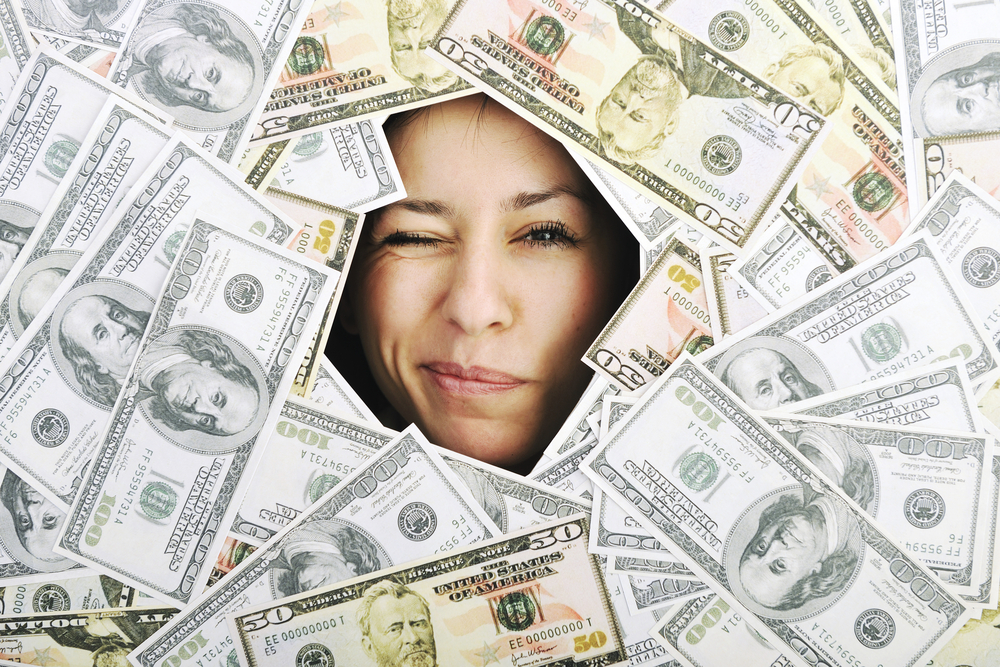
The final cost of your IPL photofacial treatments can be difficult to pin down. Prices vary from practitioner to practitioner, and location to location. Even the area on your face or body you wish to treat can have an impact on the actual price you pay. IPL treatments also usually require more than one session.
Luckily, while IPL photofacials are generally more expensive than other resurfacing procedures such as microdermabrasion or chemical peels, they tend to be more affordable than most cosmetic surgery or laser skin treatments. Skincare professionals often offer easy financing options and package deals as well.
Generally speaking, the cost of a single IPL photofacial treatment often falls between $300 and $600, and depends on the geographical location of where the procedure is performed. Usually, practitioners in cities are able to offer a more affordable rate than practitioners in rural communities. This is simply due to the demands of the community. The cost can also depend on where on your body the treatment will take place. An IPL treatment on your face might cost more than if you want to treat your neck or hands.
Under most circumstances, you’ll need a few treatments to achieve the maximum benefit of IPL. This is especially true of anyone looking to treat several problems at once. An example of this might be if you want to treat both your rosacea as well as smooth out unevenly textured skin. That being said, many doctors will offer a discounted price for multiple treatments. Your initial consultation is the ideal time to ask your doctor exactly what goes into the final price of your treatment.
FAQs
How do I know this will work for me?
You’ll first have a consultation with your practitioner. During this consultation, your skin and goals will be assessed to ensure the treatment is suitable for you. A brief overview of your medical history will also be done to determine if you’re a candidate.
Before your treatment begins, you may also have a patch test done to make sure the settings are right and to see how your skin reacts.
How does IPL work on spider veins?
The light waves of a photorejuvenation device are absorbed by hemoglobin, the red blood cells, which damages the walls of the offending blood vessels to collapse them. This destroys the spider vein and eliminates it.
How does it work on hyperpigmentation?
Instead of hemoglobin, the melanin in your skin absorbs the light waves instead and becomes fragmented. The particles of melanin are then eliminated from your skin. This is how pigmented lesions are treated.
How does it work for rosacea?
This treatment can help rosacea sufferers by targeting dilated blood vessels, broken capillaries and redness, reducing their appearance.
Can photofacial rejuvenation tighten saggy skin?
Even though collagen production is boosted to a certain extent, this procedure is not considered effective in the treatment of saggy skin because it’s more for superficial concerns. You’ll need something that goes deeper, like laser skin tightening or a surgical lift to effectively address this.
How long does it take?
Each session takes about 15-45 minutes to complete.
Is it painful?
It depends on how well you tolerate pain. The treatment feels like a rubber band snapping lightly against the skin. If you’re quite sensitive, you can have numbing cream applied to improve comfort.
Who should perform my treatment: an esthetician or medical professional?
Anyone with training can perform photofacial rejuvenation, so that can include cosmetologists, laser technicians, medical estheticians, nurses, dermatologists and plastic surgeons. The practitioner doesn’t require a medical background.
However, it’s important that whomever you choose to perform your treatment should not only have experience, but also knowledge of skin. While it’s easier to find practitioners without a medical background performing the procedure, you may be more comfortable with a dermatologist or plastic surgeon. This may be particularly true if you have a severe skin condition.
How many treatments do I need?
While you may see an improvement after just one session, most of the time 3-5 sessions are recommended, or more if your concern is severe. The sessions are spaced at least 3 weeks to a month apart from each other to allow for several reasons:
1. Since thermal injury is caused by treatment, your skin will need to recover.
2. The top layers of skin will flake off, and this exfoliation takes time.
3. Treated concerns, such as pigmented lesions, need time to get absorbed by the body.
The first sessions are generally at a more superficial depth than subsequent sessions.
Touchup treatments may be performed to maintain results, and these may be spaced several months apart.
When will I see my results?
Your skin may feel smoother right after a session, but chances are you won’t be able to see your results until several weeks later. The common side effects of swelling, bruising and redness that appear all need to subside and cell turnover needs to occur before results appear.
How can I maintain my results?
Aside from scheduling maintenance sessions, the best thing you can do to preserve your results is stay out of the sun. Sun exposure is the biggest factor contributing to the visible signs of aging, so be vigilant! Make sure to wear sunscreen and wear protective clothing whenever you go out. Another thing you can do is to lead a healthy lifestyle, which involves eating right, regular exercise and cutting out bad habits (like smoking!).
Are all photofacial devices the same?
There are so many photofacial machines available on the market today, each claiming to be better than the other. Popular brand names include FotoFacial with ELOS technology and Sciton BBL (broadband light). Rather than selecting the technology, however, it’s more important to consider the quality of the practitioner.
What’s the difference between IPL and photofacial?
IPL stands for intense pulsed light, which refers to the technology itself. Photofacial is the name of the procedure.
Why do I have to wear goggles during the treatment?
The strength of the light administered by the photofacial device can damage your eyes (which is also why the areas directly around your eyes cannot be treated.) That’s why you have to wear protective eye coverings during the treatment. Even your practitioner will be wearing goggles.
Treatment made my skin worse! Will it ever get better?
It’s not unusual for the skin to look worse before it gets better. Flakiness, splotches, redness and swelling can all hide the results of your treatment. You might even experience a severe breakout, but there’s no need to worry. Please allow a couple of weeks to pass. As your recovery progresses, your patience will be rewarded!





